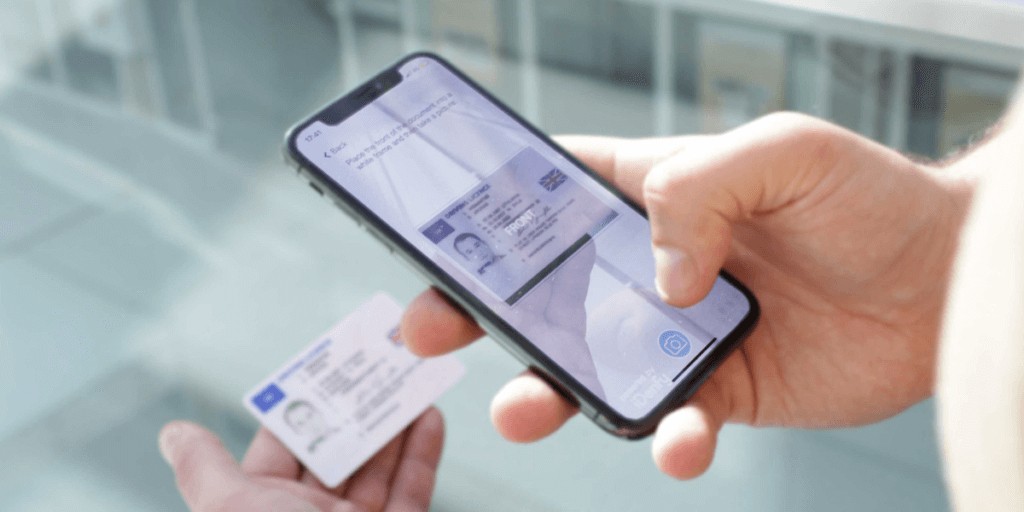Digital Identity Verification - Benefits, Types, And Best Practices
Digital identity verification plays a crucial role in our online interactions, ensuring that the people we engage with are who they claim to be. Whether you're a business owner or an individual navigating the digital landscape, understanding these aspects is essential for safeguarding personal information and preventing identity-related risks.
Author:Camilo WoodReviewer:Emmanuella SheaJan 05, 2024706 Shares44K Views

Digital identity verificationplays a crucial role in our online interactions, ensuring that the people we engage with are who they claim to be. Whether you're a business owner or an individual navigating the digital landscape, understanding these aspects is essential for safeguarding personal information and preventing identity-related risks.
What Is Identity Verification?
Identity verification is a crucial procedure that confirms the alignment of an individual's asserted identity with the authentic one. This process entails contrasting a person's claimed traits and distinctive characteristics with those that are associated with them.
The significance of identity verification lies in ensuring that a genuine individual is associated with a given process, effectively thwarting fraud through the mechanisms of authentication and authorization.
Across various domains, whether conducted online or offline, identity verification stands as a fundamental prerequisite for numerous procedures and processes. This includes activities such as online or offline banking, flight bookings, or passport applications.
What Is Digital Identity Verification?
Digital identity verification is the process of confirming the authenticity of an identity without the need for in-person interaction. It ensures that individuals are indeed who they claim to be and that the information provided is not counterfeit or stolen, thereby mitigating the risk of identity fraud. With the proliferation of criminal technology facilitating the creation of fake identities, the role of technology becomes crucial in ensuring the legitimacy of identities.
To establish someone's identity, pertinent details such as names, date of birth (DOB), addresses, and other relevant identifiers are cross-referenced with trusted digital datasets. These datasets may include credit bureaus, official government documents, or mobile operator databases.
The verification process is further fortified by incorporating negative data sets - attributes that should not be associated with the given identity. Additionally, innovative data types are employed to enhance confidence in the accuracy of the verified identity.
Importance Of Digital Verification
Businesses recognize the paramount importance of digital identity verification in minimizing risks and preventing identity fraud, particularly as various industries undergo a significant shift toward digital models.
From banks and shops to travel agencies and even fitness instructors, businesses are leveraging digital infrastructure and technology to seamlessly connect customers with services, enabling swift processes such as opening accounts, receiving deliveries, or booking flights. To comply with regulations and ensure the integrity of their services, most of these entities require identity verification before granting access.
While some businesses still rely on traditional face-to-face identity checks for tasks like opening bank accounts or applying for loans, this approach is gradually diminishing due to its time-consuming nature and resource-intensive requirements, despite its effectiveness.
Digital identity verification methods have emerged as a more efficient alternative, allowing the verification of hundreds of customer identities within seconds. This not only accelerates the process but also eliminates geographical constraints and proves to be cost-effective, although it is not without its own set of challenges and risks.
In the contemporary landscape, digital identity verification plays a pivotal role in customer onboarding processes and account opening. Using techniques such as biometric verification, digital ID documents, and face recognition, governments, financial institutions, and companies can verify an individual's identity online. This serves as a crucial measure to ensure that the person in question is not involved in criminal activities, fraudulent behavior, or attempting any form of scam.
Benefits Of Digital Identity Verification
Digital identity verification comes with a myriad of advantages. Here are some of the key benefits associated with this process:
Enhanced Security
Implementing multi-factor authentication (MFA) as part of digital identity verification significantly strengthens overall security. MFA, recognized as a reliable authentication method, not only prevents unauthorized access but also ensures compliance with industry regulations.
For instance, PCI-DSS mandates MFA in specific situations to safeguard systems against unauthorized entry. The non-intrusive nature of MFA, even amidst application updates, assures continued security.
Risk Mitigation In Human Verification
Traditional identity verification methods heavily rely on human judgment, involving comparisons of a person's photo on a government-issued ID with those seeking particular services (online or offline). However, these methods are susceptible to manipulation through readily available tools. Employing a dependable identity verification system minimizes the risks associated with human judgment, reducing errors and enhancing accuracy in confirming an individual's identity.
Enhanced Customer Experience
The customer experience is paramount, and when coupled with top-tier security, it becomes a game-changer for businesses and public service providers. Advanced identity verification systems, such as the one offered by LoginRadius, prioritize user-friendly experiences from onboarding through the entire consumer lifecycle.
The Consumer Identity and Access Management (CIAM) solution integrates secure authentication and multiple layers of verification, including multi-factor and adaptive authentication. Customers can efficiently verify their identity through social media accounts or one-time passwords (OTP), contributing to an overall positive user experience.
How Digital Identity Verification Works
When implementing a digital identity verification solution, it is essential to comprehend the underlying process. The initiation involves the user providing personal information, from which the software generates multiple data points encompassing details such as name, address, date of birth, and government-issued identification documents. Subsequently, this information undergoes a verification process.
To validate the user's legitimacy, the system cross-references the provided details against various databases and sources. The verification methods employed encompass a range of factors, including biometric data, email, phone, and social verification. Following the compilation of this data, the identity verification solution conducts a comprehensive risk assessment.
The risk assessment is pivotal in determining the likelihood of the user engaging in fraudulent activities or identity theft. Once this evaluation is complete, the system makes a decisive judgment, either approving or rejecting the user. In the event of rejection, the user is unable to proceed with the requested service or transaction, ensuring a safeguard against potential fraud or unauthorized activities.
Types Of Digital Identity Verification Methods
Online identity verification employs six common methods:
- Biometric verification - Using unique biological traits like fingerprints, iris scans, or facial recognition, this method is often found in smartphones that use fingerprint or face recognition for identity verification.
- Document verification - This approach relies on government-issued identification documents such as passports, driver’s licenses, or national identity cards for identity confirmation.
- Knowledge-based verification - By prompting the user with information only they should know, such as their mother’s maiden name or previous addresses, the system verifies the individual's identity.
- Device authentication - This method involves validating the device, such as a phone or computer, used by the individual. Verification is achieved through factors like IP address or browser fingerprint.
- Email verification - Leveraging the widespread use and acceptance of emails, this method uses personal credentials associated with an email account to verify the user.
- Phone verification - A common process occurring in three steps: the customer creates an account with their phone number, receives a one-time passcode via SMS or phone call, and then submits the passcode for verification.
Best Practices For Digital Identity Verification
Establishing effective practices is crucial to streamline and enhance your company’s verification process. Here are three recommended best practices:
- Diversify identity verification methods - Embrace a multi-faceted approach to identity verification. While two-step verification has become widespread, employing various methods significantly improves accuracy and security. For instance, combining phone-based and knowledge-based verification enhances reliability.
- Stay informed on regulations - Keep abreast of the latest regulations governing digital identity verification, including Know Your Customer (KYC) and Anti-Money Laundering (AML) requirements. Maintaining compliance is essential to avoid financial losses and legal penalties. Engaging a reputable third-party verification provider ensures adherence to regulations while guaranteeing security and reliability.
- Prioritize user data protection - Given the wealth of personal data collected during the verification process, prioritize robust security measures. Implement encryption, firewalls, and access controls to safeguard your users' data effectively. Ensuring the privacy and security of user information is integral to maintaining trust.
- Implement robust fraud detection - Integrate robust fraud detection and prevention measures to swiftly identify and thwart fraudulent activities. Real-time monitoring and alerts contribute to proactive fraud prevention. Given the dynamic nature of the online landscape, continuously enhance your processes to stay ahead of evolving threats and dangers. Regularly update your strategies to align with the latest security challenges.
By adhering to these best practices, your company can not only enhance the efficiency and security of its verification process but also adapt to the evolving landscape of digital threats and regulatory requirements.
Choosing A Digital Identity Verification Provider
Choosing the Best Customer Identity Verification Software: Seven Critical Factors
- Security - Look for a provider with robust security measures to safeguard personal information and prevent fraudulent activity.
- Reliability - Opt for a provider with a proven high level of accuracy to minimize the risk of legitimate customers being mistakenly flagged as fraudulent.
- Compliance - Ensure your chosen provider is well-versed in all relevant laws, such as KYC and AML, to avoid legal and regulatory issues.
- User Experience - Balance fraud prevention with a positive user experience. Choose a provider offering a user-friendly and streamlined verification process to avoid deterring legitimate customers.
- Integration - Prioritize providers that offer easy integration to seamlessly incorporate the identity verification process into your existing systems, reducing implementation costs and improving efficiency.
- Scalability - Assess whether the provider can scale its services to meet your current and future identity verification needs as your business grows.
- Reputation - Consider the provider's verified and positive track record to ensure peace of mind when making your selection. A reputable provider adds an extra layer of confidence in their ability to deliver reliable identity verification solutions.
Tips For Implementing Digital Identity Verification
Before selecting identity verification software, ensure proper implementation for optimal benefits. Clearly define requirements and business goals to guide your choice of provider.
Understanding your business and customers is crucial to choosing the right verification method. Test the process with a small customer sample to identify and address potential issues.
After testing, communicate transparently with customers about the verification process, data collection, and usage. Maintain trust through clear communication to secure customer buy-in.
Train employees on the verification process to instill customer trust and handle any issues that may arise. Once set up, monitor fraud by confirming the effectiveness of detection and preventative measures. Continuous review and improvement are essential to adapt to evolving threats and maintain security.
Cyber protection is critical, and digital identity verification is a vital component. Choose a reliable provider, such as Ekata, to ensure the security, efficiency, and user-friendliness of your business processes. Contact Ekata to explore if they are the right provider for your needs.
Challenges Of Digital Identity Verification
Digital identity verification encounters various challenges, including:
- Mismanagement and misuse of data - The proliferation of online services necessitates increased consumer data, raising the risk of mismanagement and misuse. News of data breaches is alarmingly common, emphasizing the need for vigilant efforts to securely protect and encrypt the entrusted data.
- Mass scale data breach - Regular occurrences of mass-scale data breaches have almost become the norm. These breaches expose sensitive information, allowing fraudsters to impersonate individuals, use stolen credit cards, or take control of bank accounts. Choosing trusted and certified identity verification solutions is crucial to safeguarding customer data.
- Identity fraud/hackers - The growing quest for online services attracts identity fraud and hacking attempts. Cybercriminals exploit vulnerabilities in digital identity verification processes to gain unauthorized access, emphasizing the importance of partnering with reliable and certified solutions.
As consumer data becomes increasingly critical for online services, addressing these challenges requires a conscious effort to choose secure and trusted identity verification solutions.
Digital Identity Verification - FAQ
What Is Virtual Identity Verification?
A digital identity, also known as a digital ID, is a way to gain verification and access to products and services online. With one, businesses can employ faster and smoother customer onboarding, and individuals can open and access online accounts for banking, shopping, and government services.
What Does Digital Identity Do?
It reduces the need to take ID documents to a government shopfront and replaces using multiple logins to access different government services.
What Is The Best Way To Verify Someone's Identity?
To verify someone's identity, you need evidence. This can be physical evidence, such as a passport, driver's license, and proof of address. Digital evidence can also be considered as copies of physical evidence.
Final Words
In the dynamic world of digital transactions and interactions, the importance of robust identity verification cannot be overstated. From enhancing security to offering a seamless user experience, the benefits of digital identity verification are substantial. As we continue to embrace the digital era, prioritizing secure and efficient identity verification becomes not just a necessity but a cornerstone for a trustworthy and reliable digital environment.
Jump to
What Is Identity Verification?
What Is Digital Identity Verification?
Importance Of Digital Verification
Benefits Of Digital Identity Verification
How Digital Identity Verification Works
Types Of Digital Identity Verification Methods
Best Practices For Digital Identity Verification
Choosing A Digital Identity Verification Provider
Tips For Implementing Digital Identity Verification
Challenges Of Digital Identity Verification
Digital Identity Verification - FAQ
Final Words

Camilo Wood
Author

Emmanuella Shea
Reviewer
Latest Articles
Popular Articles

